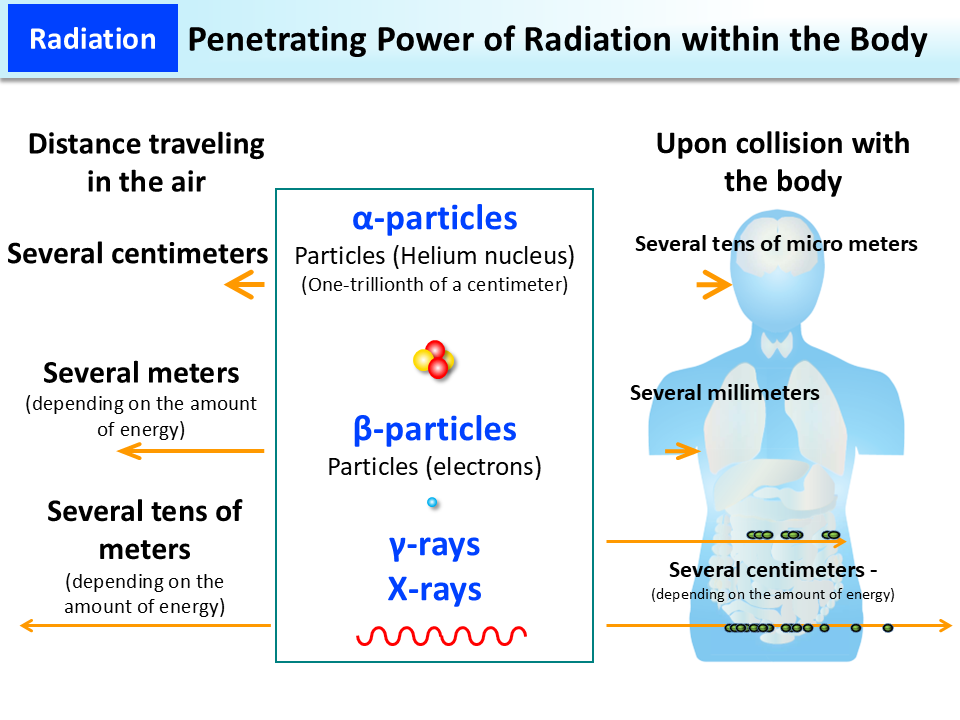Penetrating Power of Radiation within the Body
The easiness to penetrate through the air or the human body varies depending on the types of radiation. Therefore, the types of radiation (α (alpha)-particles, β (beta)-particles, or γ-rays) and radioactive materials (nuclides) that cause problems differ for external exposure and internal exposure.
α-particles can travel only several centimeters in the air and a sheet of paper is enough to stop them. In the case of external exposure, α-particles do not reach deeper than the layer of dead cells (horny layer) on the skin surface and do not cause effects. However, if an alpha-emitting radionuclide enters the body, it will provide energy intensively to nearby cells where it is deposited.
Since β-particles travel only several meters in the air, they hardly contribute to exposure when a radiation source is located away from the body. When the surface of the body is exposed to β-particles, their energy is imparted to the skin and subcutaneous tissues; when β-particles enter the body, their energy is imparted to a radius of several millimeters around the relevant spot.
γ-rays and X-rays have high penetrating power and travel several tens to hundreds of meters in the air. When they collide with the human body, they can reach deep into the body or sometimes pass through it. Their energy is imparted to the part they pass through. In X-ray examination, the parts of the body X-rays can easily pass through (lungs, etc.) appear in black while the parts they cannot easily pass through (bones, etc.) appear in white.
(Related to p.22 of Vol. 1, “Penetrating Power and Range of Effects on the Human Body”)
- Included in this reference material on March 31, 2013
- Updated on March 31, 2019

